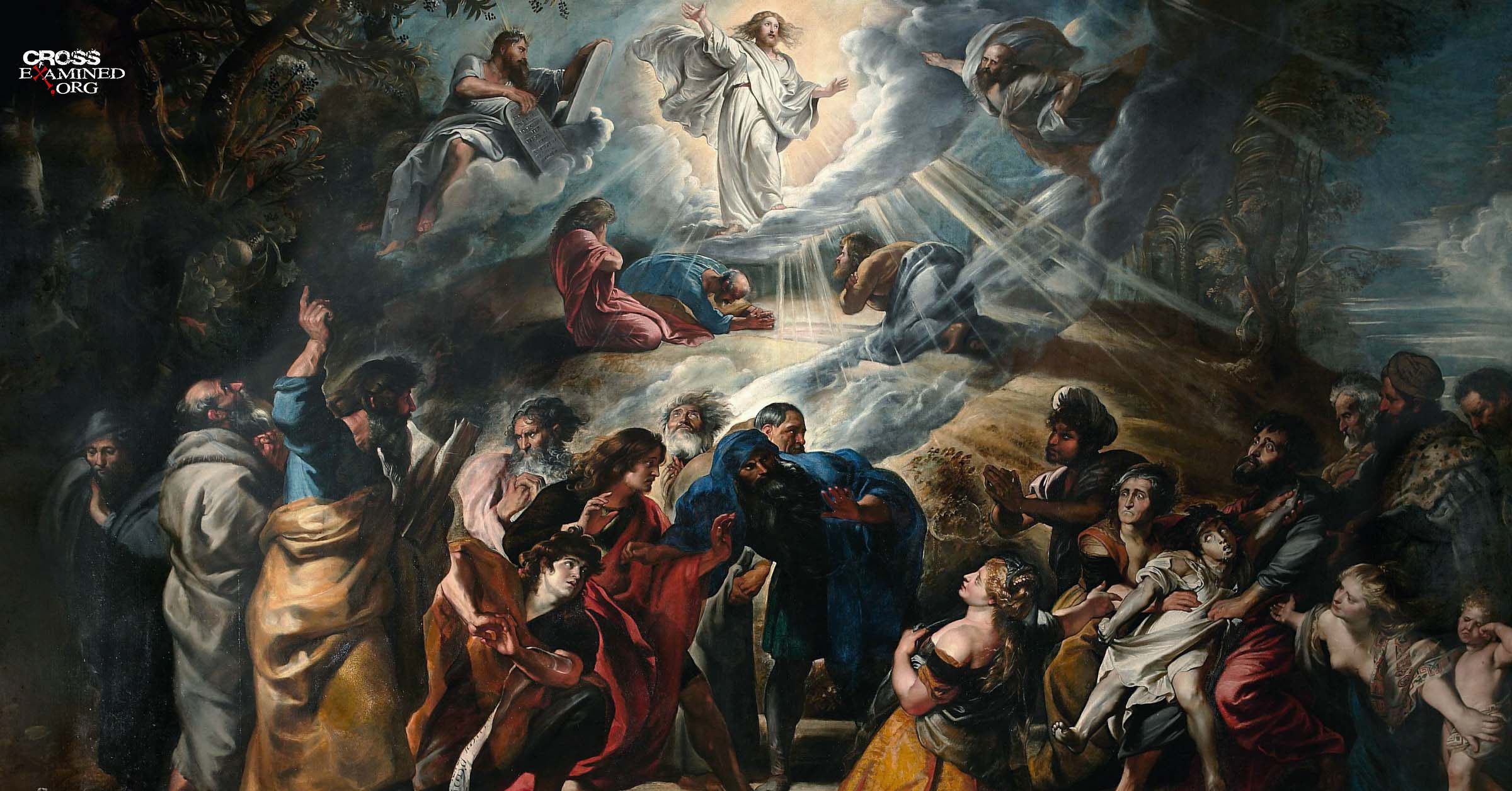Does John’s Gospel give us a much higher view of Jesus than what we find in Matthew, Mark and Luke? Bart Ehrman certainly thinks so. He says:
If Jesus went around Galilee proclaiming himself to be a divine being sent from God…could anything else that he might say be so breath-taking and thunderously important? And yet none of these earlier sources says any such thing about him. Did they (all of them!) just decide not to mention the one thing that was most significant about Jesus? Almost certainly the divine self-claims in John are not historical.
How Jesus Became God p 125
In other places, Ehrman admits that the Synoptic Gospels don’t depict Jesus as a mere man. But he isn’t pre-existent and he isn’t the same as the God of Israel. Ehrman instead argues that Jesus’ ‘divinity’ was something that came into being after his resurrection. Only then did his disciples begin giving Jesus honors he never claimed for himself.
The big problem here is that Ehrman is making an argument from silence, as I discussed in a previous post. But the other problem is that the claim that Jesus isn’t depicted as Yahweh in the Synoptic Gospels simply isn’t true. Jesus speaks and acts very much like the God of the Jewish Scriptures. Let’s take a look at one of my favorite examples: The Mount of Transfiguration. This example was brought to my attention by Catholic NT scholar Brant Pitre. This miracle takes place in all three of the Synoptics, but I’ll be focusing on Mark’s version:
And after six days Jesus took with him Peter and James and John, and led them up a high mountain apart by themselves; and he was transfigured before them, and his garments became glistening, intensely white, as no fuller on earth could bleach them. And there appeared to them Elijah with Moses; and they were talking to Jesus. And Peter said to Jesus, “Master, it is well that we are here; let us make three booths, one for you and one for Moses and one for Elijah.” For he did not know what to say, for they were exceedingly afraid. And a cloud overshadowed them, and a voice came out of the cloud, “This is my beloved Son; listen to him.” And suddenly looking around they no longer saw any one with them but Jesus only. And as they were coming down the mountain, he charged them to tell no one what they had seen, until the Son of Man should have risen from the dead.
Mark 9:2-9
Something very weird is going on here. What’s up with Moses and Elijah appearing on the mountain with Jesus? Why is it specifically these two guys and not, say, Abraham, Noah or David? The answer I heard in Bible college was that Moses represented the Law, the first five books of the Bible, and Elijah represented the Prophets, the second major part of the Jewish Scriptures. The symbolism seems straightforward enough, I suppose. But it never felt very satisfying.
JESUS THE GLORY OF GOD
Pitre points out a better explanation for why Moses and Elijah appear, one more deeply rooted in the Old Testament. If you’ve read the Old Testament, you know that both Moses and Elijah experience theophanies—that is, appearances of God—in which God comes to them on a mountain and reveals his glory. However, neither Moses nor Elijah can see God’s face.
Let’s look at some passages: In Exodus 33:18-23 Moses said, “I beg you, show me your glory.” And he said, “I will make all my goodness pass before you, and will proclaim before you my name ‘The LORD’; and I will be gracious to whom I will be gracious, and will show mercy on whom I will show mercy. But,” he said, “you cannot see my face; for man shall not see me and live.” And the LORD said, “Behold, there is a place by me where you shall stand upon the rock; and while my glory passes by I will put you in a cleft of the rock, and I will cover you with my hand until I have passed by; then I will take away my hand, and you shall see my back; but my face shall not be seen.”
Now let’s look at 1 Kings 19:9-13: And there he [Elijah] came to a cave, and lodged there; and behold, the word of the LORD came to him…. And he said, “Go forth, and stand upon the mount before the Lord.” And behold, the Lord passed by, and a great and strong wind rent the mountains, and broke in pieces the rocks before the LORD, but the LORD was not in the wind; and after the wind an earthquake, but the LORD was not in the earthquake; and after the earthquake a fire, but the LORD was not in the fire; and after the fire a still small voice. And when Elijah heard it, he wrapped his face in his mantle and went out and stood at the entrance of the cave.
A couple of things stand out here. Both of these experiences happen on Mount Sinai, which is a mount of divine revelation. Notice also that neither Moses nor Elijah were allowed to look at God. Despite hearing him and seeing manifestations of his power, they cannot see his face.
What does all of this have to do with the Transfiguration? You see, on the mountain of the Transfiguration, Moses and Elijah are finally allowed to see what they couldn’t see during their earthly lives: the unveiled face of God. What makes this possible? The God who appeared to them on Mount Sinai has now become a man. Jesus is God with a human face. Is your mind blown just a bit yet?
PLURALITY IN THE GODHEAD
Also, notice that in the same way that God descends upon Mount Sinai in a cloud and speaks to Moses and the people (Exodus 19:16), so now “a cloud” covers Jesus on the mountain of the Transfiguration and a voice says: “This is my beloved Son; listen to him” (Mark 9:7). The voice reveals Jesus’s true identity. Not only does Jesus speak and act as if he is God, but God speaks and acts as if Jesus is his divine Son. Here then we see a plurality of persons in the one God. On the Mount of Transfiguration, the apostles see that there is both God the Father and God the Son.
And this concept of the unseen Yahweh and the seen Yahweh isn’t merely a New Testament idea. It’s rooted in the Old Testament. You see, there’s a recurring paradox throughout the Jewish Scriptures. Remember that God says to Moses “you cannot see my face, for man shall not see me and live,” (Exodus 33:20). But multiple people in the Old Testament do see God and live! Let’s look at a few examples.
- For starters, we have Jacob. Genesis 32:20 says “So Jacob called the name of the place Peniel, saying, “For I have seen God face to face, and yet my life has been delivered.”
- There’s also Gideon: Judges 6:22 reads: “Then Gideon perceived that he was the angel of the Lord. And Gideon said, “Alas, O Lord God! For now I have seen the angel of the LORD face to face.”
- And there’s Samson’s parents: “The angel of the LORD did not appear again to Manoah and his wife. Then Manoah realized that it was the angel of the LORD. And Manoah said to his wife, “We shall surely die, for we have seen God” (Judges 13:21,22).
These are all cases where individuals are scared to death because they’ve come face-to-face with God and yet their lives have been spared. Notice that these people saw the face of the angel of Yahweh. Ah, so it’s the Angel of the LORD who appears as the seen Yahweh. It is through the Angel of Yahweh that men can look on God’s face and still live.
And just as God speaks to Jesus on the Mountain, we see conversation apparently happening within the Godhead in the Old Testament. For example, Zechariah 1:11-13 says: Then they spoke to the angel of the LORD who was standing among the myrtle trees, “We have patrolled the earth, and lo, the whole earth remains at peace.” Then the angel of the LORD said, “O LORD of hosts, how long will you withhold mercy from Jerusalem and the cities of Judah, with which you have been angry these seventy years?” Then the LORD replied with gracious and comforting words to the angel who talked with Me.
Here the Angel of the LORD plays the role of mediator, the same role Jesus fulfills in the NT. (Romans 8:34, Hebrews 7:25, 1 John 2:2) Also, note Jacob’s blessing of the sons of Joseph in Genesis 48:15-16: “The God before whom my fathers Abraham and Isaac walked, the God who has been my shepherd all my life long to this day, the angel who has redeemed me from all evil, may he bless the boys.” This case of Hebrew parallelism suggests that “the angel” and “God” are to be taken as the same person.
Moreover, check out Judges 2:1-2, where the angel of the Lord says, “I brought you up from Egypt and brought you into the land that I swore to give to your fathers…” Jude 5 says that: “Now I want to remind you, although you once fully knew it, that Jesus, who saved a people out of the land of Egypt, afterward destroyed those who did not believe.” Though a minority of manuscripts read κύριος instead of Ἰησοῦς, this is of little interpretive significance since the preceding verse identifies Jesus as “our only Master and Lord.”
The point here is that Ehrman is wrong. Jesus is portrayed as Yahweh in the Synoptic Gospels, but in a very Jewish way, and one that includes a plurality within the Godhead found in the Old Testament. And we have multiple lines of evidence that what is recorded in the Synoptics is based on eyewitness testimony. What happened on the Mount of Transfiguration isn’t a cunningly devised fable. See my playlist on the historical reliability of the Gospels for more.
Recommended resources related to the topic:
Jesus, You and the Essentials of Christianity by Frank Turek (INSTRUCTOR Study Guide), (STUDENT Study Guide), and (DVD)
Jesus vs. The Culture by Dr. Frank Turek DVD, Mp4 Download, and Mp3
_____________________________________________________________________________________________________________________________________________________
Erik is a Reasonable Faith Chapter Director located in Cedar Rapids, Iowa. He’s a former freelance baseball writer and the co-owner of a vintage and handmade decor business with his wife, Dawn. He is passionate about the intersection of apologetics and evangelism.
Original blog: https://bit.ly/3QOJLDJ










